Splendor is an outstanding board game, one that we’re all huge fans of among the Assorted Meeples. There aren’t many board game that are permanently in the rotation as a “play anytime” game with our group but Splendor is one of those games. As a history buff, I also love the fact that the pictures of the Nobles in Splendor are from real life merchants, nobles, and royalty of the 1600s.
All the pictures of Nobles in the game of Splendor are real-life historical figures who were heavily influential figures in European politics in and around the 16th century and include:
- Mary Stuart of Scotland
- Charles V (Karl V) Holy Roman Emperor
- Machiavelli of Florence
- Isabella of Castile, Queen of Spain
- Suleiman the Magnificent
- Catherine of Medici
- Anne of Brittany
- Henry the VIII of England
- Elizabeth of Austria
- Francis I of France
So who are these historical figures that caused debate among so many players about their identity and who they are? Between some Internet Sleuthing, historians chiming in, and finally some designers from the original company that made the game chiming in, we can safely say we know who the original 10 nobles in Splendor are.
So let’s dive in further!
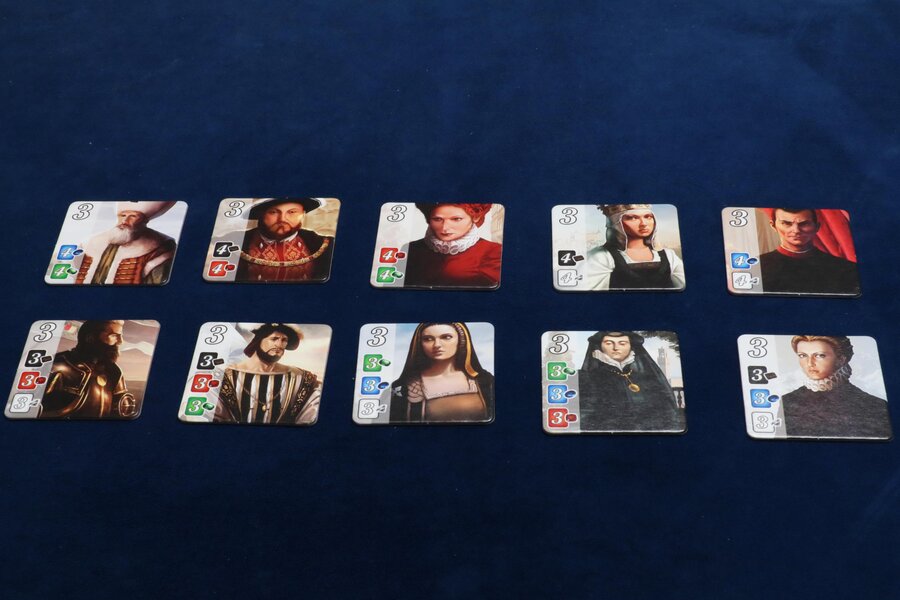
The 10 Nobles in The Game of Splendor
While Sulieman the Magnificent is based out of the Ottoman Empire, they did conquer or vassalize a good chunk of eastern Europe, encouraged trade, and even had a treaty with France to help them hold off the Habsburg Family.
5 Nobles are 4-4 Nobles, meaning they require 4 cards of two different colors. The other 5 Nobles are 3-3-3 Nobles, which means you need 3 cards of three different colors.
This means there are enough noble cards in the game to create many different arrays of cards, and that in turns affects the demands for each one.

Mary Stuart – 4 Emeralds, 4 Rubies
Mary Queen of Scots is better known in modern times for the dramatic qualities of her story. It plays right into a romanticized royal story, the kind that usually makes for a good Hollywood movie albeit with a less happy ending.
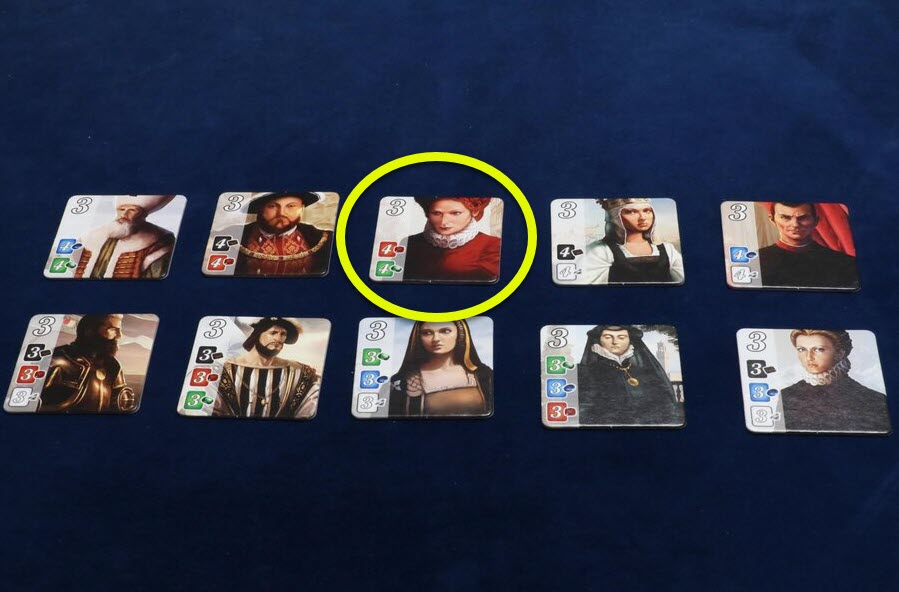
She was technically queen at a few months old a the only surviving child of King James when he perished.
The country was run by advisors, and she was known by some as the child queen. Despite being cousins with the Queen of England, it wasn’t surprising that old long-standing rivalries and grievances resulted in strife and support for uprisings that were a threat to the English crown.
Mary was forced to abdicate the throne in 1567 when she was 25 years old and lived for another 20 years in England, but when rumors of her connection to further unrest and planned uprisings made their way to London in connection with some general unrest, she was executed in 1587.
Then, like now, the intrigue around what was or wasn’t true around the child queen’s story keeps her in the public Zeitgeist far more than her accomplishments as a head of state.
Niccolo Machiavelli – 4 Diamonds, 4 Sapphires
I mean, there was no way that there was going to be a game set in 1500s Italy without mention of the (in)famous Niccolo Machiavelli.
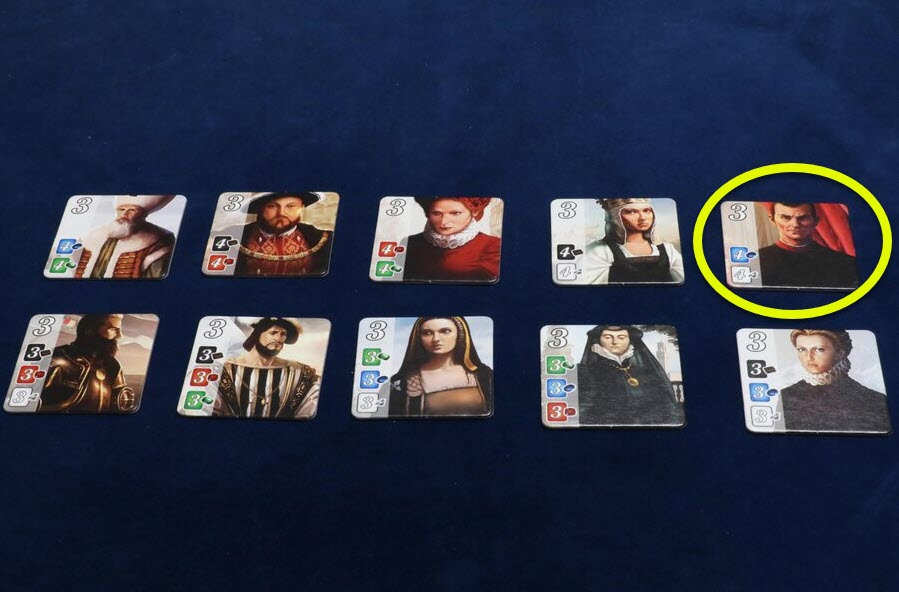
Best known now as author of The Prince, a work that is so important I had it on my reading list for three different college classes for three different major/minors, but what many don’t know is that Machiavelli was far more than just an author.
During his life he served in many political, advisory, and governmental roles. He was a diplomat, and advisor to nobility, a philosopher, and even a senior government official for the Florentine Republic of the Italian states.
The was a respected diplomat, a strategically minded philosopher and advisor whose ability to navigate the often treacherous waters of interstate Italian politics.
Florentine was one of the more important states along with Venice and Milan, meaning Machiavelli being a major name in diplomacy and politics out of Florence made him an important local and regional figure. That’s even before the fact he was respected for his writings and philosophies – which would come together for The Prince.
Isabella I of Castile – 4 Onyx, 4 Diamonds
Yes, this is that Queen Isabella of Spain. While that’s how many history books refer to her, at the time she was more often referred to as Queen Isabella of Castile.

It’s not hard to see why she was picked among the Splendor Nobles. There were few who had the influence on world history that she did.
Along with husband Ferdinand they were known as the “Catholic Monarchs” of Europe for their fervent faith and defense of the Papacy.
They did many amazing things for Spain including finishing the Reconquista to reclaim Spain for Christian Europe by driving out the Islamic Moorish Empire, ushering in the Spanish Golden Age, and of course provided Christopher Columbus with the funding that would lead to the European discovery, and eventually colonization, of the New World.
Spain re-emerged on the European stage as one of the major powers of Europe thanks to this couple’s guidance, and although as with many things in history it wasn’t all roses and sunshine (the Spanish Inquisition and Jewish expulsion being two huge stains on Spain’s history during this time) but not including Isabella of Castile when focusing on 1500s European politics for Splendor nobles would have been a strange decision.
Suleiman the Magnificent – 4 Emeralds, 4 Sapphires
You can tell the designers of this game understood the importance of history when they picked Suleiman the Magnificent, because while not European, there’s no denying the importance of his influence on the European world during this time – not to mention history in general.

That meant when picking nobles for Splendor Suleiman the Lawgiver, as he was known among the empire, and later given the title Suleiman the Magnificent, was a political and military force.
Suleiman the Magnificent ruled from 1520 to 1566, growing the Ottoman Empire to over 25 million people. He conquered or vassalized more of Eastern Europe than any other Ottoman ruler.
Beyond that he was known for creating a code of laws to be used throughout the empire which included rules on trading, taxes, deals, and even some basic protections for citizens of the empire. This was as fair a system of laws that could be found anywhere at the time, and directly helped usher in a golden age of trade and wealth, which helped fund more trade, the arts, and exploration.
He even agreed to an alliance with France when the Habsburg Monarchy tried pushing into France and removing Francis I from the throne. Recognizing a divided Europe couldn’t turn to crusade him, Sulieman was willing to give a good faith alliance to empower an ally of a different religion, something incredibly unusual during this time period.
There’s a reason he shows up in every iteration of Sid Meier’s Civilization series of video games 🙂
King Henry VIII of England – 4 Onyx, 4 Emeralds
While it’s certain King Henry VIII will remain more famous for the many wives and marriages than for ending up as one of the noble cards in Splendor, he’s a solid choice to represent one of England’s most important leaders during this time.
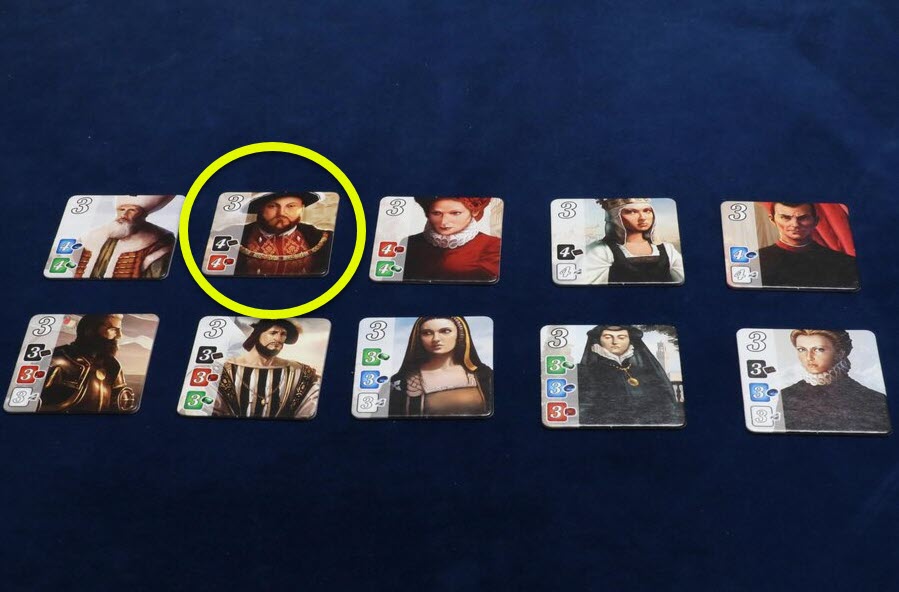
King Henry the VIII had a long reign, ruling as king from 1509 to 1547. While history will remember the multiple marriages and executed wives, his actions did change England and European politics as a whole.
Henry strongly grew the powers of the monarchy during his reign and in the early to middle of his reign was thought of as a very competent, capable, and charismatic leader. Even by other leaders in Europe who found themselves at odds with him and England as a whole.
He was the Father of the Royal Navy, transforming England’s navy into an unrivaled force that would allow them to project power across the world, setting the stage a century later for Cromwell to copy and enhance that model of discipline to create the world’s first professional full-time army.
With an unrivaled navy England could defend itself and opened up trade opportunities off island. His infamous multiple marriages resulted in creating the Church of England, resulting in his excommunication, and splitting England from Papal influence.
Undeniably, he was a force, though the later years of his reign were known for his poor health, paranoia, and tyranny as he saw threats in the shadows everywhere…mostly imagined.
Charles V of Holy Roman Empire – 3 Onyx, 3 Rubies, 3 Diamonds
Charles V, known as Karl V to Germans, is the most important historical figure among the nobles in Splendor that will be well recognized by students of European history while virtually unknown by those outside of Europe.
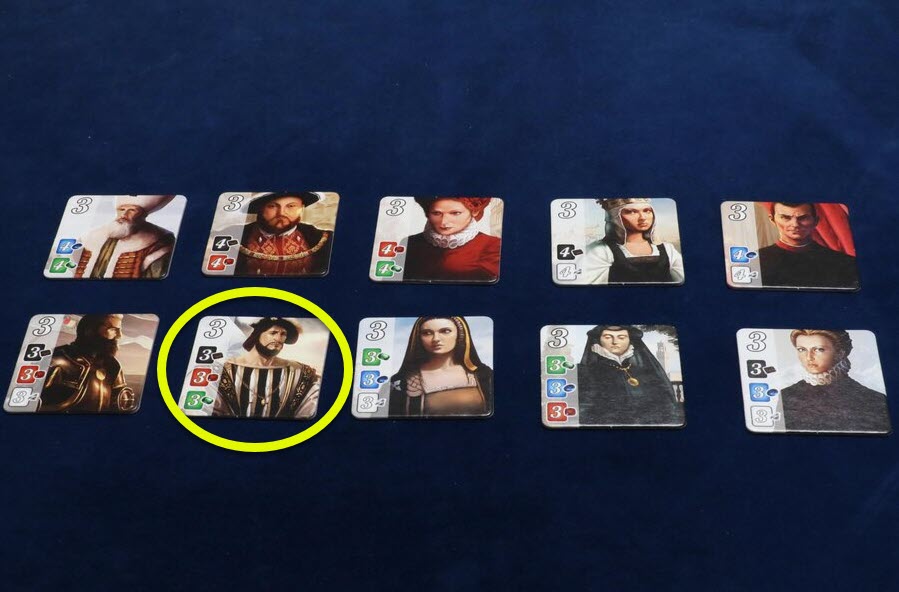
Charles was leader of the Holy Roman Empire, and was arguably the least truly powerful Holy Roman Empire who held major influence over European politics in general.
He was a member of the House Habsburg, and managed to leverage those connections for more power and support for the Holy Roman Empire, which in turn made the Habsburgs all the more powerful a force in Europe.
Though he made major land grabs and fought in multiple battles to expand the empire, it did come at a cost. Much of the wealth grabbed from his share of riches pillaged in the New World went to bankers to repay debts and inflation was a problem that caught up to him late in his regin.
At various times Charles V held the title of:
- Holy Roman Emperor
- Archduke of Austria
- King of Spain
- Duke of Burgundy
- Lord of the Netherlands
- Head of House Habsburg
There was no one in Europe unaffected by his actions or political decisions during his reign, making him a natural choice to be one of the Nobles of Splendor while the game was in its design phase.
Catherine of Medici – 3 Emeralds, 3 Rubies, 3 Sapphires
Undoubtedly one of the most powerful women in European history, Catherine of Medici was such a force that history remembers the reign of her sons’ monarchies as “The Age of Catherine Medici” as general consensus is that she was the power and political stability behind each monarch who would have been considered weak otherwise.
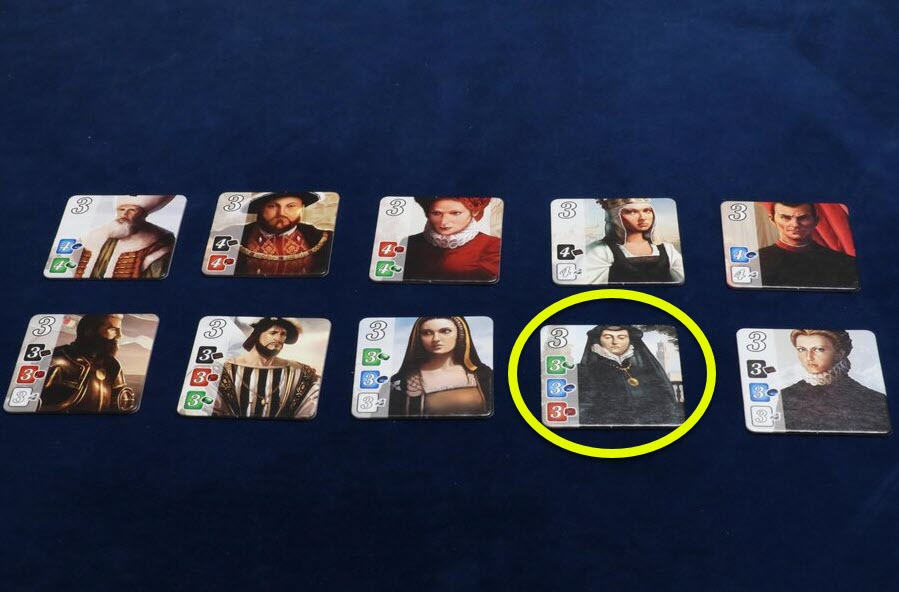
Catherine de’ Medici came from the powerful Florentine Medici family, she became queen of France via marriage to King Henry II and was Queen from 1547 to 1559.
She had three sons who took the monarchy after Henry II’s death, and she remained a powerful political player in the courts of each of her sons.
In fact this was so widely accepted that the reigns of Francis II, Charles IX, and Henry III are pretty much grouped together as “The Reign of Catherine Medici.”
The background in trade and mercantilism from her family and the Florentine state gave her a capacity with money which was crucial as balancing taxes and debt was important in keeping their family on the throne while these problems would lead to the downfall of later French monarchs.
She was also known as a major patron of the arts helping France to contribute to the Golden Ages of art that were taking place throughout Europe, though some scholars argue this was as much a tool to appease an increasingly unhappy populace versus a true patronage.
Either way, it shows the shrewdness of Catherine – and how would you have a board game based on trading gems in the 1500s and not have Catherine of Medici among the noble cards?
Anne of Brittany – 3 Emeralds, 3 Diamonds, 3 Sapphires
Anne of Brittany was Queen of France, twice, and was a part of the monarchy while France was expanding their borders in the Franco-Italian Wars. Anne had a reputation as a patron of the arts and a ruler who cared and was very conscientious of the needs of the general population and people.
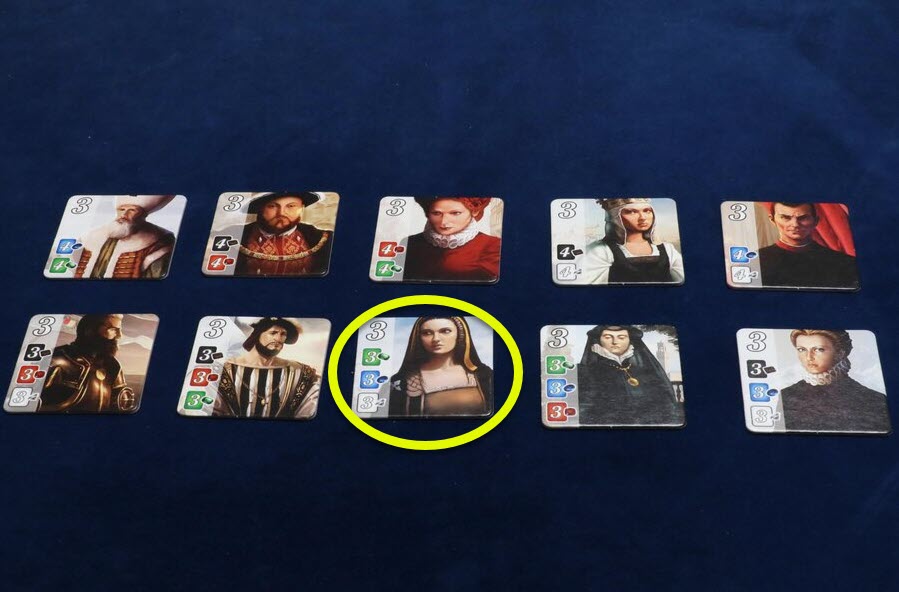
Anne was the Duchess of Brittany, which made her an appealing marriage candidate and did lead to her becoming Queen of France via marriage.
In fact, she’s the only two-time queen of France as she married Charles VIII, and after his death, his cousin Louis XII who took over as monarch.
She kept Brittany as an ally to France but was a staunch defender of the people of Brittany, making sure to use her position as queen of France to assert their independence.
She was a true patron of the arts and was said to be especially fond of artistic advances in architecture. She was a popular rule, and was even briefly Queen of Naples and Duchess of Milan due to the earlier mentioned Franco-Italian wars.
She’s a great choice to be among the Noble Cards in Splendor.
Elisabeth of Austria, Queen of France – 3 Diamonds, 3 Onyx, 3 Sapphires
A member of the powerful House Habsburg, Elisabeth of Austria was married to Charles IX of France, making her queen of France from 1570 to 1574. What’s most interesting about this, aside from the fact it showed the Habsburgs appearing to make some inroads to France after the death of Francis I, was what Elisabeth chose to do after her husband the king died only four years later.
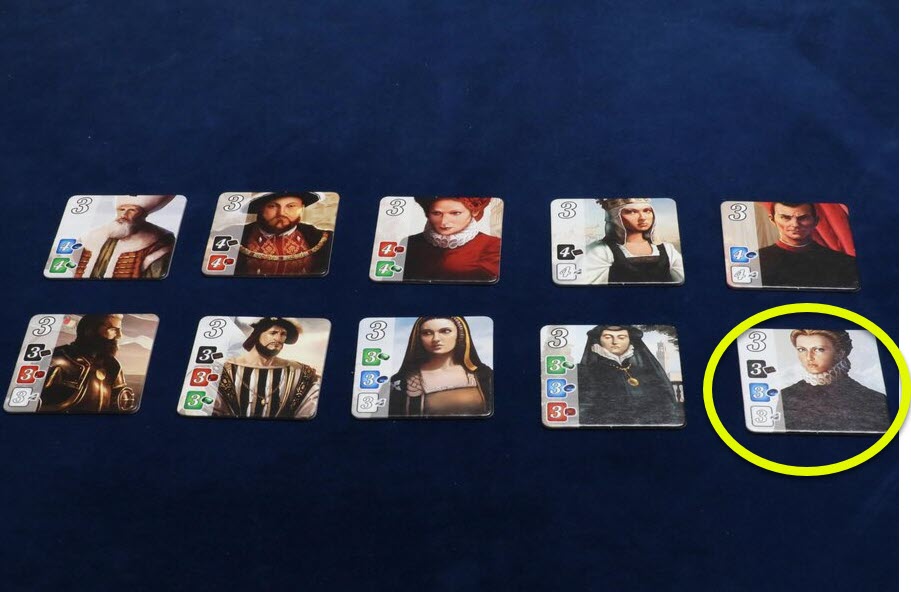
She refused to remarry despite, by all accounts, being attractive in appearance in addition to a great royal marriage candidate.
She made the famous quote that a Queen of France does not remarry and truly lived to the tenants of her faith.
She returned to Austria after the death of Charles IX and spent the rest of her life doing charitable work, helping the poor, and using her influence to get funding for Abbeys that then focused on doing good works for the poor and impoverished in their communities.
Known as a queen of faith, she really lived up to those standards, refusing future marriage proposals and committing herself to continuing those good works until her death. At this point she was buried in a simple marble slab, though her remains were removed and reburied by order of Emperor Joseph II.
An intriguing, and interesting, choice to be one of the nobles in Splendor.
Francis I of France – 3 Emeralds, 3 Onyx, 3 Rubies
Francis was king of France from 1515 to 1547 and had a lasting effect on French culture which included making France a very art-friendly kingdom that reached out to attract the top artists across the continent – even those from nations they were often at war with (see the Italian states).

Francis the I was a king where when you read about his accomplishments it would be easy to name him a diplomat and art patron, both of which are true.
By many accounts he was an artist and diplomat first, which makes his nickname of “The Knight King” all the more surprising as he was a fierce fighter and one of the last monarchs who went into battle with his troops.
A major force behind the French Renaissance, and the main reason Leonardo da Vinci came to France and brought the Mona Lisa with him. He fought wars in Italy to push back against Habsburg encirclement of France, and diplomacy paid off when Francis formed the Franco-Ottoman alliance with Suleiman the Magnificent to keep foreign threats at bay.
One of the last great monarchs of France, Francis I certainly deserves his place among the Splendor nobles.
A Little Bit of History for You Board Gamers
There you have it. Those are the confirmed nobles in Splendor, and if there are special releases or expansions in the future that stay with these historical trends of important European figures in the 1500s I’ll be sure to come back and update this.
However, for all of us out there who love history, love board games, and love the intersection of the two then this is the type of article that I spent an admittedly embarrassing amount of time researching to find the answer to because in the beginning that information just wasn’t out there.
Now you know who all 10 nobles in the board game of Splendor are! So feel free to throw out some of that historical knowledge at the table while enjoying one of the truly great and re-playable board games out there!
Other Board Game Articles You May Love
- Splendor Strategy Guide
- What Is the Ladder Strategy in Splendor?
- Godsforge Board Game Review
- Best Munchkin Expansions
- Best Games Like Risk

Proud to embrace the locally created moniker of “Corrupt Overlord” from one of the all time great Lords of Waterdeep runs, Shane is one member of the Assorted Meeples crew and will be hard at work creating awesome content for the website. He is a long-time player of board games, one time semi-professional poker player, and tends to run to the quirky or RPG side of things when it comes to playing video games. He loves tabletop roleplaying systems like Dungeons & Dragons, Pathfinder, Werewolf, Fate, and others, and not only has been a player but has run games as DM for years. You can find his other work in publications like Level Skip or Hobby Lark.
